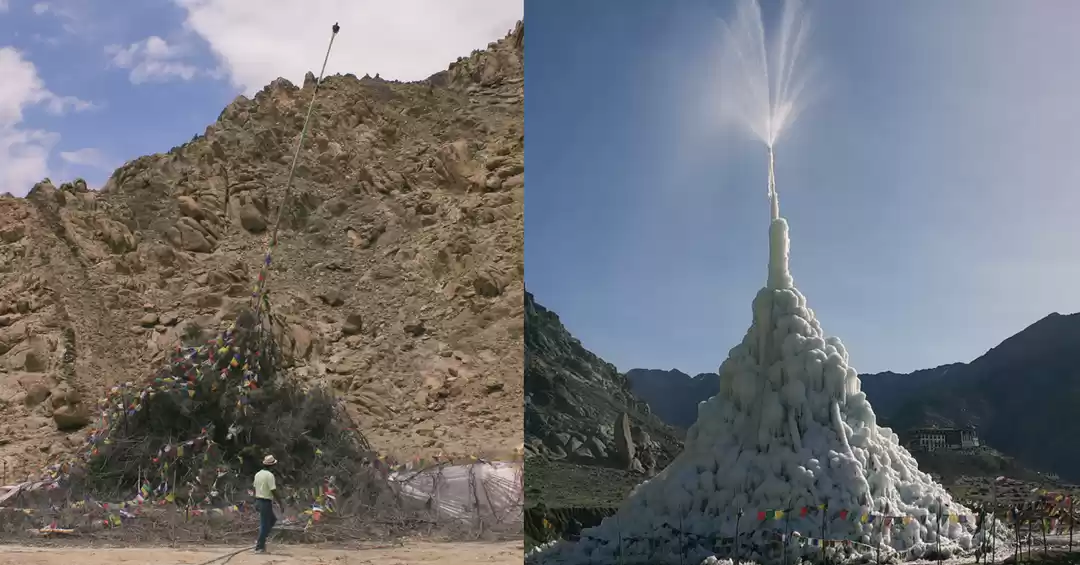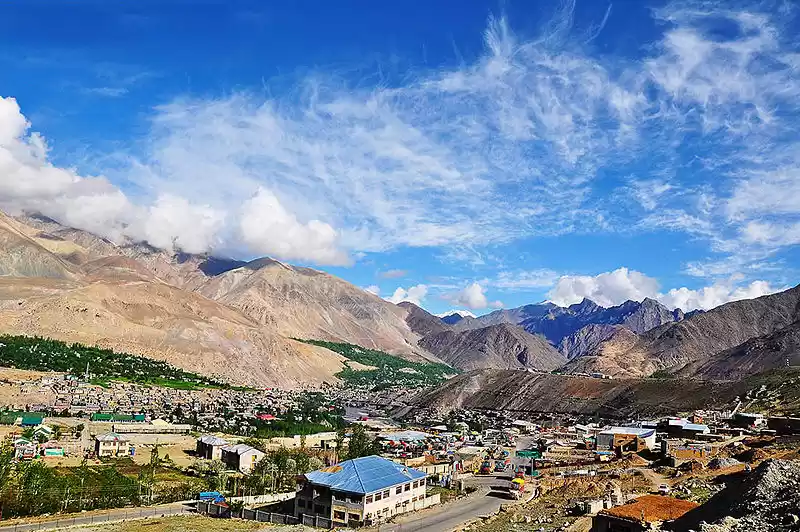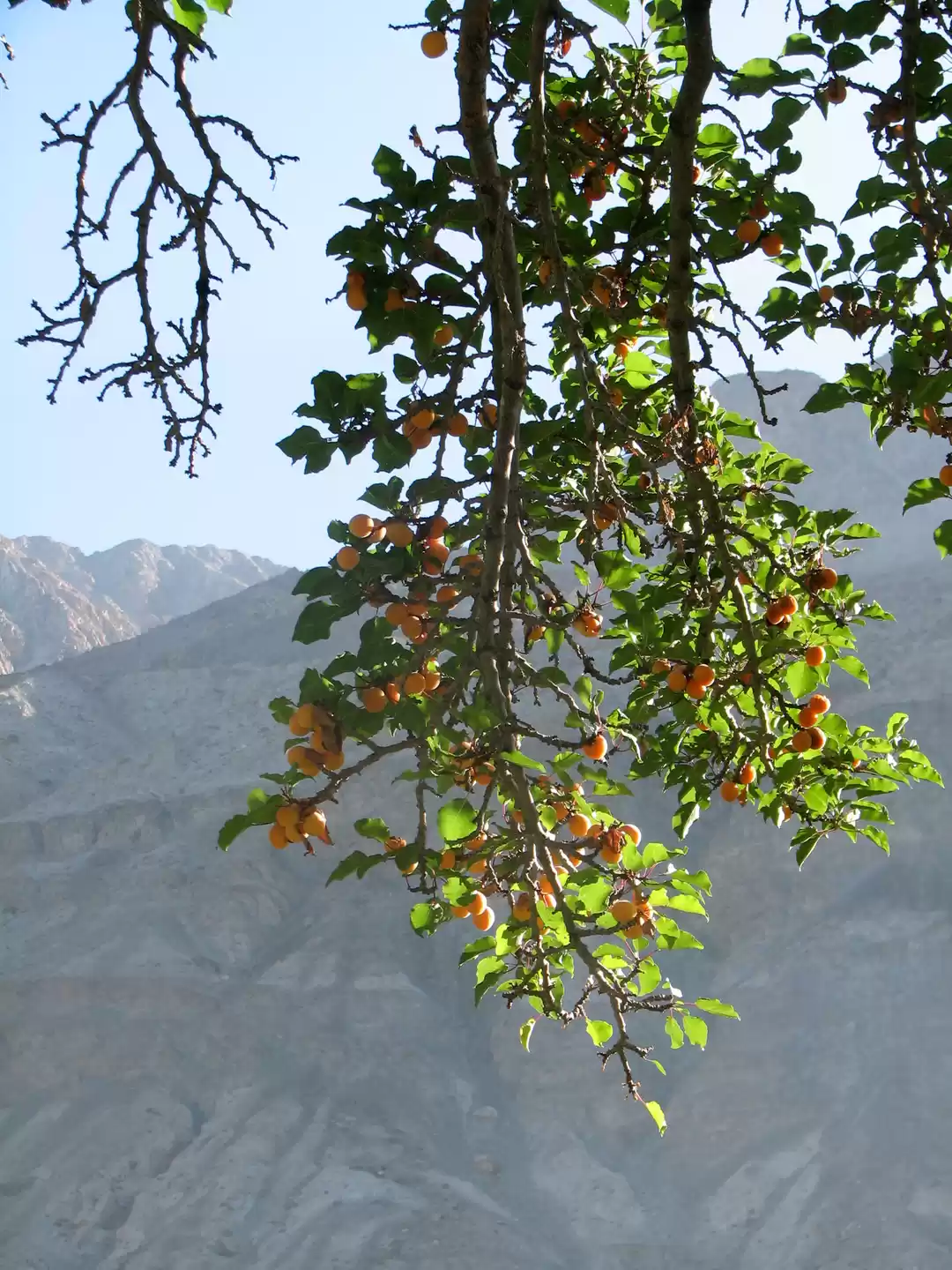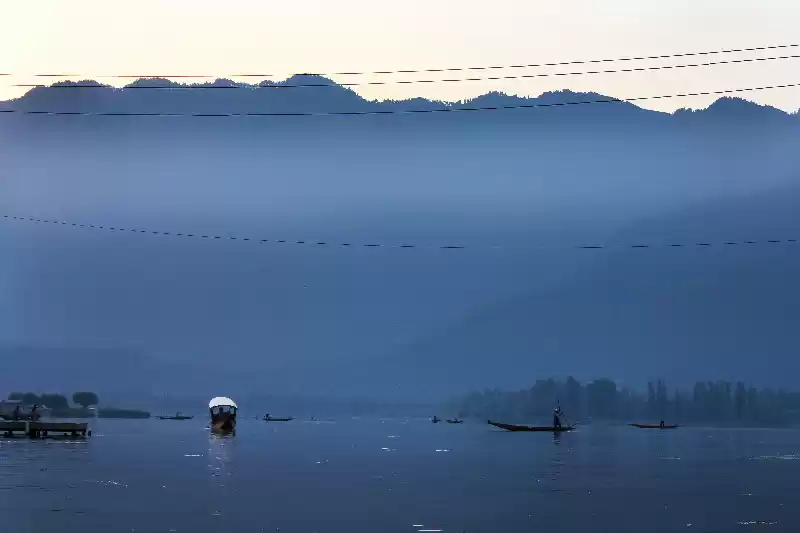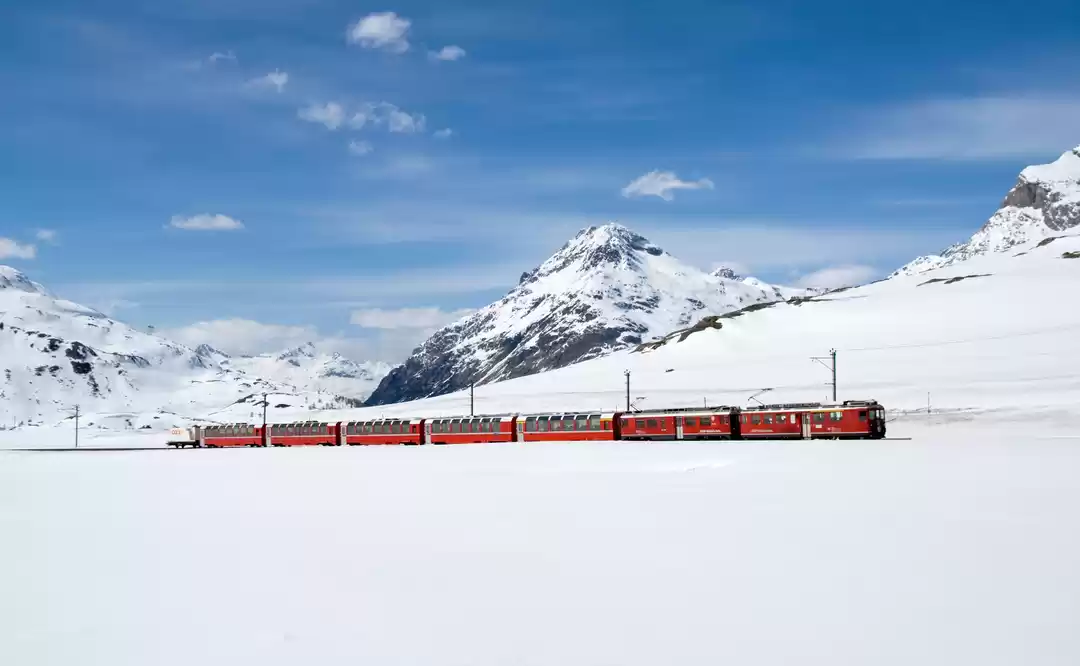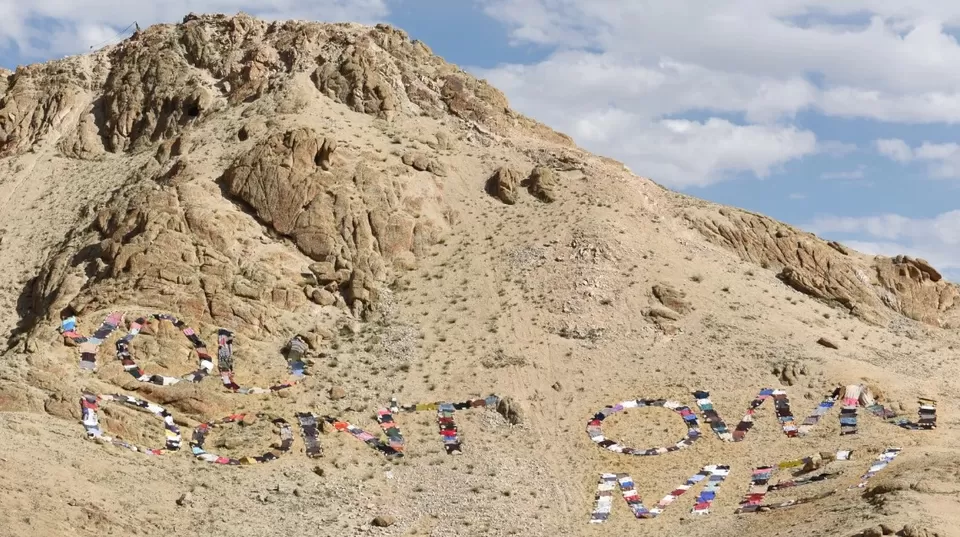
No Kidding! Can you guess the place?
It is Leh in Ladakh!
Climate change is real. Even if you keep trying to convince yourself that resources will prevail, then you need to give it serious thought.
Resources will be depleted, temperatures will rise further, the frequency of natural calamities will increase, the fertility of soil will decrease, greenhouse gas emissions will steep, and many more adverse effects will be brought to light every single day. In fact, the data is already there. But are we aware?
One of the regions of India decided to bring forth the necessity to create awareness around the ecological crisis that is looming over it. And that region is Ladakh.
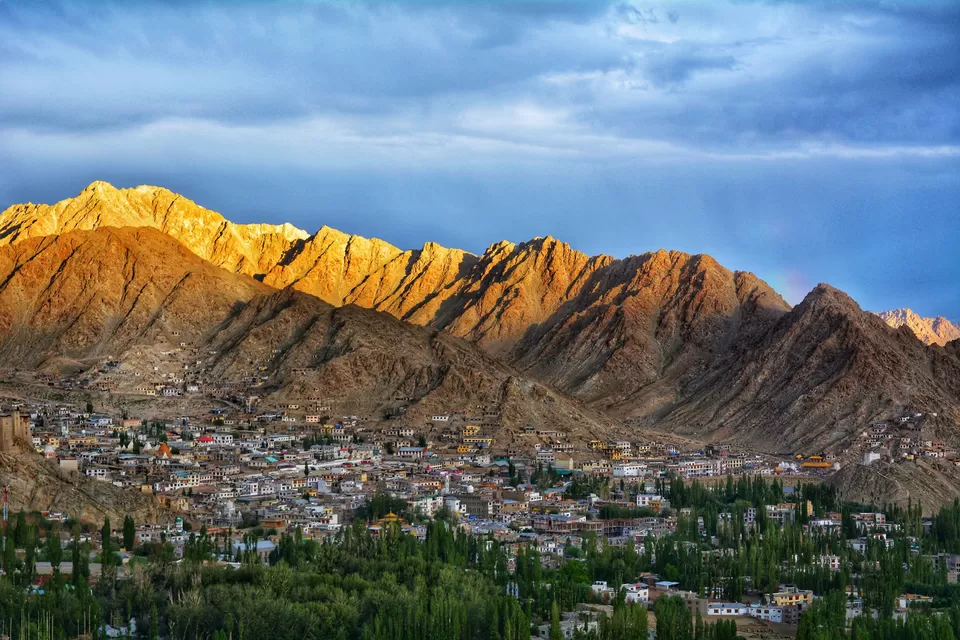
The initiative of hosting Asia’s highest ever contemporary art exhibition, titled “sā Ladakh” (sā meaning 'soil' in Ladakhi and Ladakh being the land of which Leh is a joint capital) at a staggering altitude of 12,000 ft was undertaken by Ladakhi mountaineer Tenzing ‘Jammy’ Jamyang, Austrian Sri Lankan artist Raki Nikahetiya and Indian designer Sagardeep Singh and was opened to public by Michael Pal – the Director of Austrian Cultural Forum.
The List of International and Indian Artists Whose Work Will Be Exhibited
• Anayat Ali
• Anshu Singh
• Arunima Dazess Wangchuk
• Birender Yadav
• Tsering Gurmet Kungyam
• Kai Maluck
• Małgorzata Stankiewicz
• Tsering Motup
• Nikolaus Geyrhalter
• Philipp Frank
• Ritu Sarin
• Tenzing Sonam
• Skarma Sonam Tashi
• Stenzing Tankong
• Tundup Dorjey Churpon
• Vibha Galhotra
• Robert Schabus
• Malgorzata Stankiewicz
• Sharbendu De
• Jigmet Ango
The Significance of the Exhibition
Primarily to bring about awareness about the fragile ecosystem of Leh that will probably foster a dialogue on climate-related issues, this exhibition is a first of its kind show.
Soil scarcity is a reality in the mountainous city of Leh because of being overshadowed by the towering peaks of Himalayas that has forced its inhabitants to survive without fertile land. Or for that matter even water, one of the essential elements to survive is sparse.
This exhibit displays all the dominating factors of ecological distress, to address the themes of climate change, nature and sustainability through its use of locally acquired, zero-waste materials which have been salvaged or repurposed and are biodegradable. According to one of the show’s co-founders, Sagardeep Singh “We want to leave as little trace as possible,”
Venue:
A remote 20-acre plot of arid plot surrounded by steep hills is where all the artists have created ten site-specific sculptures and installations in the Disko Valley.
Dates: 01st of August – 23rd of August
Glimpses of Some of the Works
1. Crafted by Leh-based artist and architect Tundup Gyatso, 'Kicker of Plastics' emerges from a fusion of discarded plastic bottles, earth, and wood. This creation stands as a poignant reflection on the ecological repercussions of tourism, an intention eloquently expressed by Nikahetiya. Nikahetiya further elaborated Gyatso employs his installation as a powerful symbol to address the scourge of plastic pollution, urging a reevaluation of our patterns of consumption.
2. Skarma Sonam Tashi, an artist originating from Leh, has ingeniously transformed aged notebooks, cardboard, and clay into a representation, underscoring the pivotal role of glaciers for hillside communities grappling with water scarcity.
3. Anayat Ali's Sacred Place delves into the ever shifting and fragile ecology of Ladakh, which has been notably impacted in recent times by the carbon footprints of the growing tourism sector and by infrastructure projects that capitalize on the area's natural resources.
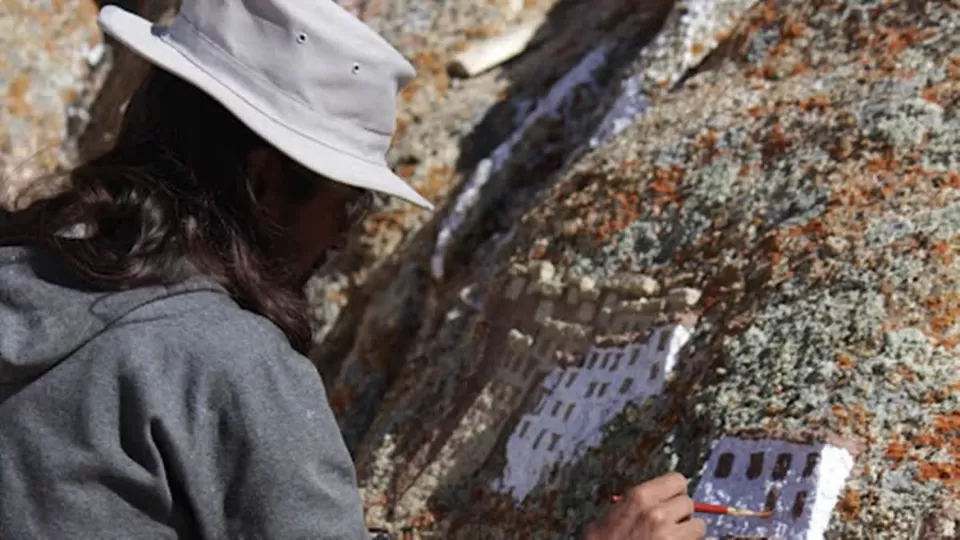
4. At the heart of Arunima Dazess Wangchuk's work 'What if we Prayed to the Mountains?' lies a deep reverence for Mother Nature. Through the utilization of commonplace materials such as clay, metal wire, wood, jute rope, stones, and rocks, this artwork poignantly raises a straightforward yet thought-provoking query: 'Would the world be a better place if humans prayed to the mountains?’ In a catalog that accompanies the exhibition, Wangchuk observes with a tinge of sadness ‘I strongly feel there is a gap in people and the land. There just isn't enough respect or value for it.’
5. Then there are artists such as Tsering Gurmet Kungyam, who derive inspiration from indigenous mythology to craft art that is simultaneously captivating and intellectually stimulating. Rooted in Ladakhi folklore, the concept of 'bayuls' refers to enigmatic and legendary sanctuaries, rumored to be inhabited by fairies, elves, and other mystical entities. Through his art installation aptly named "Bayul," Kungyam, a native of Leh, pays homage to these tales by fashioning an oasis amid the rugged landscape. This oasis takes the form of a mirror-like mirage nestled within the contours of a hill, remaining concealed to the casual observer, yet profoundly captivating to the discerning eye.

6. Nikahetiya asserts that Anshu Singh's appropriately titled 'River of Sweat' is a remarkable spectacle showcasing discarded saris that would have otherwise found their way to a landfill.

7. Nikahetiya, the creator behind the mixed media piece "For A Fifty Million Years" which is crafted using local soil, discarded materials, and rammed earth construction techniques expresses a deep connection and love for nature. This artwork is featured as part of the exhibition.
8. A striking illustration of this phenomenon is showcased through the artistic endeavors of Vibha Galhotra, an artist based in Delhi. In her installation on a hillside, discarded saris and other clothing items, which were once bound for landfills, are skillfully arranged to form the powerful statement: "YOU DON’T OWN ME." This artwork boldly asserts that the prevailing age of "global boiling" can be traced back to an unjust consumption of Earth's resources by those holding authoritative positions, as emphasized by Galhotra. Simultaneously, the installation touches upon Ladakh’s precarious status as "a border land under political threat," creating a significant bridge between the exhibition's articulated ideals and the region's charged political landscape.
We are a civilization that thrives on progress – be it social or technological or even religious. We are embracing change that has either been introduced sensitively or imposed upon us or conveniently ignore the inevitable by being in denial. But how long should one ignore the detrimental effects of climate change until someone finally stands up and shows us the mirror.
A land where tourism has snowballed to around 250,000 visitors in 2022 as opposed to their permanent population of 30,000 and if reports are to be believed 2023 will probably break that record too. Considering this continuous influx of visitors, the ecological vulnerability of this region is worrying and rightfully so.
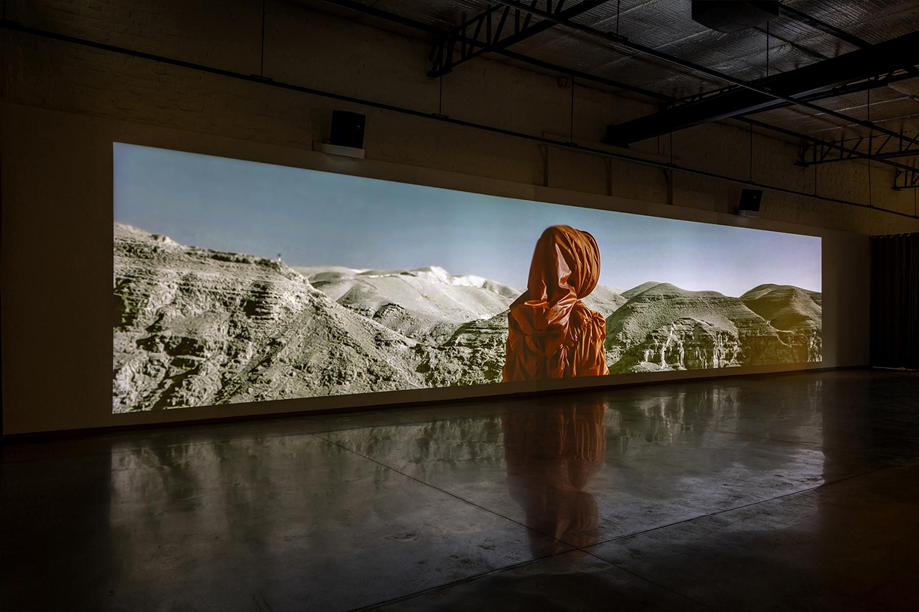
From plastics to carbon footprints – we are leaving everything behind in these pristine mountains, that is not just disbalancing the ecology but also the local inhabitants who rely on them for their livelihood and revere the elements of nature.
Essentially it is time to be accountable for one’s own actions and be a responsible traveller or else these offbeat, untouched, tranquil lands will fall prey to the effects of urbanization.
If you find my articles helpful, follow my site for more travel-related info - Wander Alone.
Think we missed out on something? Tell us about it in the comments below. Or write about it here on Tripoto and earn Tripoto Credits!














